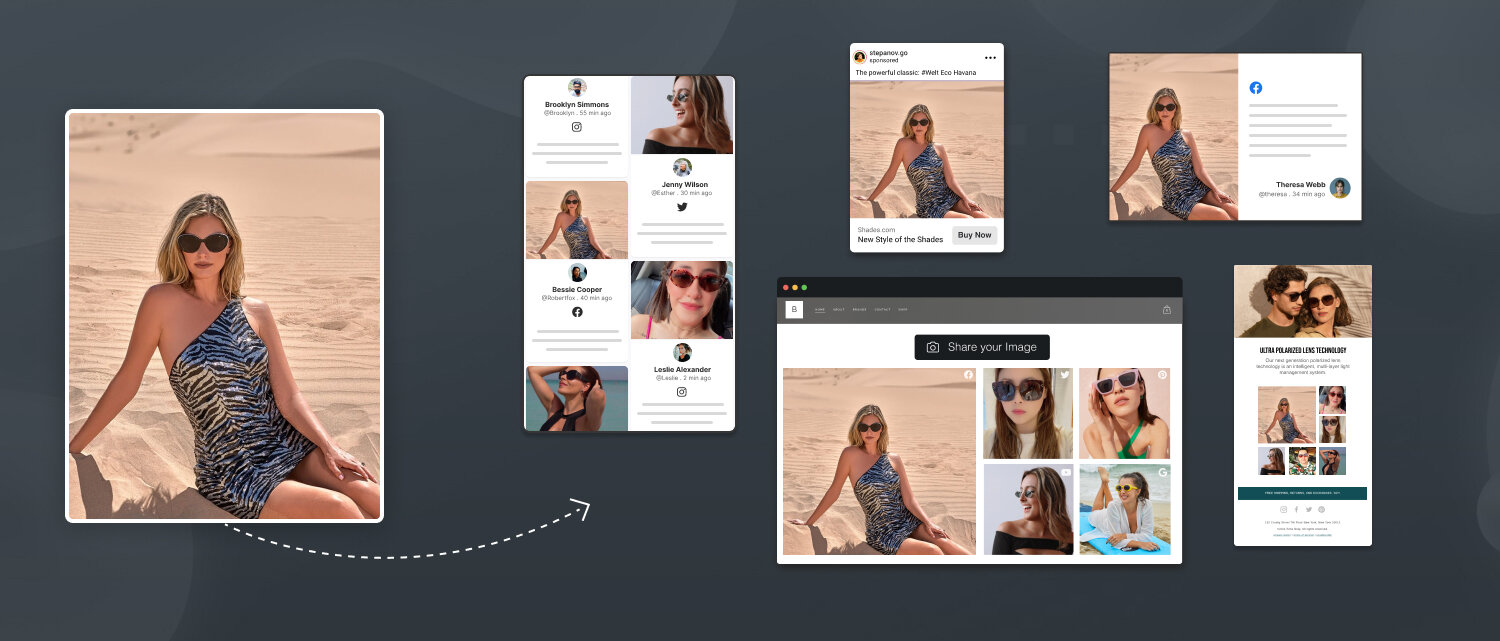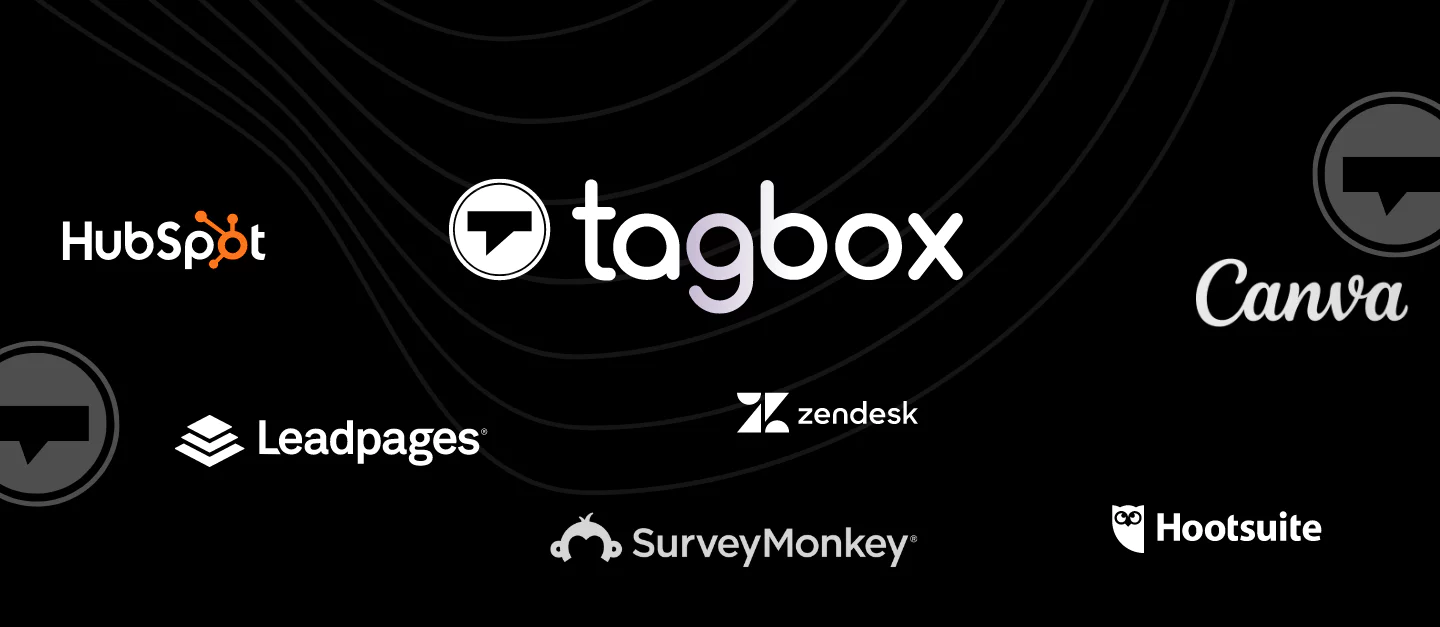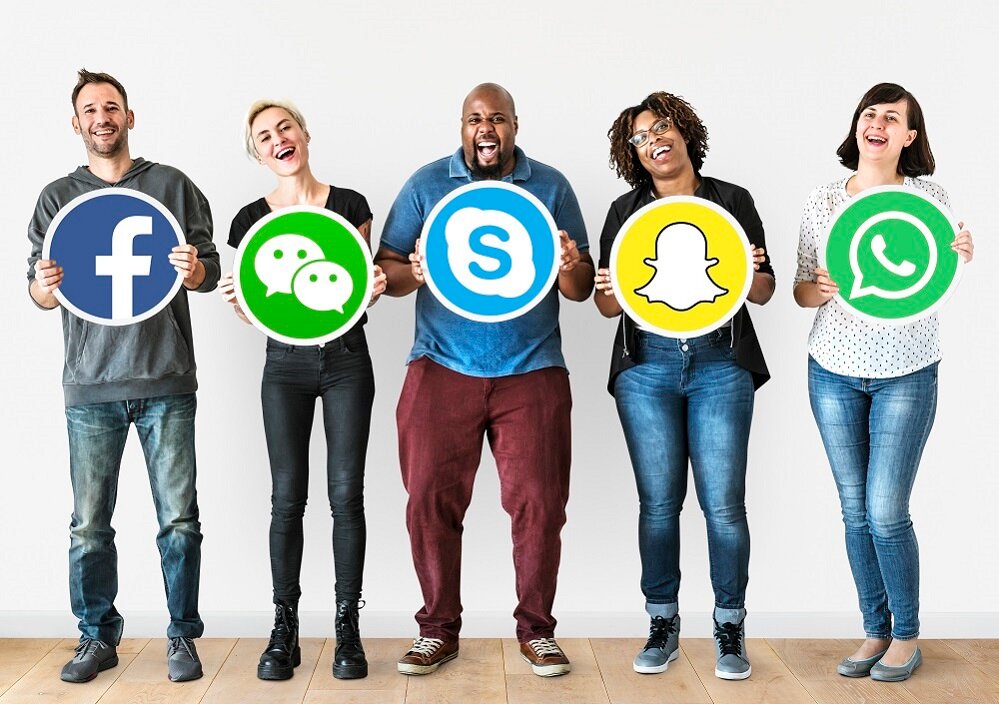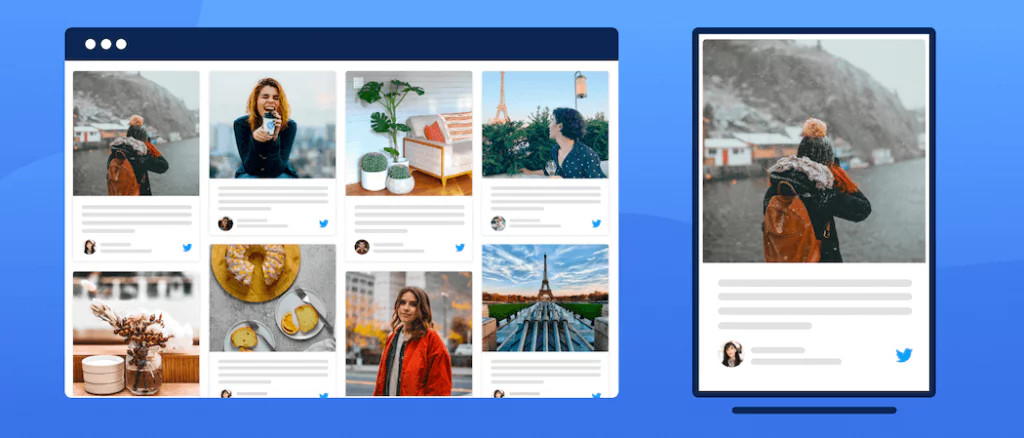Read summarized version with
Omnichannel marketing is the practice of promoting your product and service exactly where your target audience is. With this strategy, the brands analyze how their audience is behaving on various channels and strategize their content accordingly.
Statistics show that people interact with about six to eight touchpoints before they make a decision.
Hence, consistently providing content to your users is crucial to making an impact and influencing their preferences. Brands need to personalize their content and spread it across multiple channels.
This is where omnichannel marketing comes in the entire marketing scenario. It is a result-driven customer-centric marketing strategy allowing brands to interact with their customers exactly where they are. It also provides a consistent user experience from product discovery to conversion.
Continue reading to learn more about Omnichannel marketing, its examples, strategies, trends, and how impactful it is to grow your business and reach out to mass prospects. Let’s get started.
Incorporate UGC into your Omnichannel Marketing Success
Taggbox – The Best UGC Platform
What is Omnichannel Marketing?
It is the process of promoting a brand’s product and services across multiple channels, platforms, devices, and marketing touchpoints, and providing a seamless user experience.
With Omnichannel marketing brands spread awareness smartly to interact with their customers. They analyze user behavior and reach out to them exactly where they are. Allowing users to access your brand easily. This type of marketing is all about making yourself available and accessible anywhere your target audience is.
Omnichannel marketing allows brands to give a cutthroat competition. Users have the option to interact with the brand on various channels, this approach ensures brands reach out to mass prospects on relevant platforms.
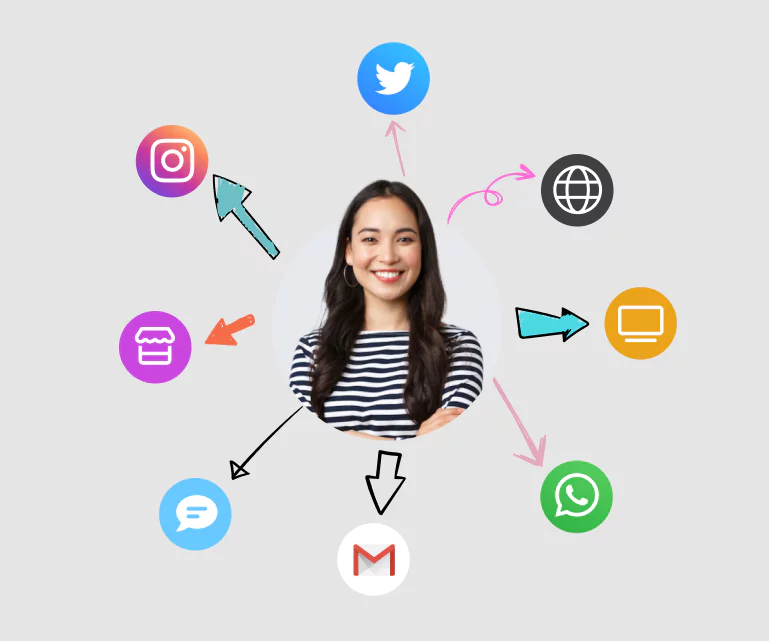
A few key elements offered are consistent brand-generated content, personalized content based on customer behavior, and user-generated content that influences potential customers. With omnichannel, you can market your brand on diverse platforms like offline advertising such as billboards, banners, and online advertising like website/applications, social media, and much more.
Suggest Read – Marketing KPIs of User Generated Content
Have you ever received a scheduled text message about an offer or discount going on while you are physically present at the store? That’s exactly what omnichannel marketing is.
Omnichannel vs Multichannel Marketing
People often get confused between multichannel vs omnichannel marketing. With multichannel marketing brands, the main focus is on the company and spreads similar messages across various platforms whereas omnichannel strategies are more customer-centric and send messages according to the customer behavior to provide a seamless experience.

In multichannel marketing, brands focus on showcasing a constant and generic message across various channels however, omnichannel marketing first understands and analyzes the customer behavior and provides them personalized and specific information about the brand which is in line with their behavior across various channels.
Omnichannel marketing is the practice of leveraging your marketing campaigns on multiple platforms, channels, and devices to promote your business to a dynamic audience. It offers a seamless and uninterrupted interactive experience across numerous objectives.
| Factors | Multichannel Marketing | Omnichannel Marketing |
|---|---|---|
| Focus | Brand-centric | Customer-centric |
| Type of content | Static across channels | Adapts with customer behavior |
| Interaction | Works independently | Works together with various channels |
| Examples | Apple promotes their product online and offline regardless of user behavior. | Amazon knows previous purchases and displays similar product ads. |
Benefits of Omnichannel Marketing
“There is a level of personalization that can only be achieved by omnichannel marketing. When you provide this relevancy, customers respond better to it, they purchase more, and they come back more often.”
Rytis Lauris
The biggest benefit of omnichannel marketing is its relevancy. It is not only relevant to brands but also to the customers. Let’s look at a few benefits in detail.
Ace Engagement and Build Brand-user Relationships
Omnichannel marketing focuses on individual behavior across various devices instead of the different platforms they use. This way customers get a personalized and user-centric purchase experience. As a marketer when you showcase your brand on the right platform to the right audience, it automatically develops a sense of trust within the brand. By focusing on the customer rather than the brand, they drive more sales and improve retention rates.
Enhances Brand Value
Develop a seamless and unified strategy across all your online and offline channels to showcase your brand identity and create a positive reputation for the brand. Brands can focus on core user needs and values. Emphasize the larger prospect in a way that coincides with your business guidelines. By focussing on each channel you provide a more comprehensive brand value and enhance loyalty.
Makes Customer Acquisition and Retention Easy
Omnichannel marketing motivates users to interact with your brand across numerous marketing touchpoints. A simple content strategy enhances engagement at every stage of the user’s journey that helps generate revenue. Statistics show that users who interact across multiple channels turn out to be 30% more valuable.
For example, a user found your brand on Google and visits your website post which they also liked some of your Instagram posts or even followed you. By showcasing yourself on every platform, you also build loyalty, as customers tend to purchase again with brands that they are familiar with. Repeated users generate up to 40% of revenue, despite covering a smaller portion of the entire customer base.
Grab User Attention
By tracking user engagement brands get a better understanding of what their customers are looking for. This helps in taking a step ahead and offering solutions for the user’s problems instantly. Acknowledging where and when your customer requires assistance and how your buyer moves around various channels is very important. You can customize your data based on how the customer is behaving on various channels and build a targeted marketing strategy to utilize your marketing expense in an optimized manner.
Also Read – Customer Engagement Strategies
How to Build Effective Strategies with Omnichannel Marketing?
This type of marketing is beneficial for all kinds of businesses. From growing startups to renowned eCommerce, marketers are getting to know omnichannel marketing better. A whopping 67% of marketers believe it to be crucial for brands
Understand your Target Audience
Understanding your audience is one of the most important parts of omnichannel marketing. You need to know as much as you can about your customers and move further by curating and analyzing their information. And you can then follow their behavior and reflect it on your website and other channels by providing solutions at every stage.
You can utilize quizzes and online surveys to understand what your users desire the most. Recognizing their preferences can help you offer them a better and more seamless purchase experience.
Focus on Audience Segmentation
You can segment your audience based on:
Behavior: How frequently do they shop, when was the last time they purchased something from your brand, and where do they stand in the customer journey.
User data: Demographics, location, age, gender, preferences, expenditure, income, and other information you have gathered over time.
Ways of Interaction: How do they engage with the brand, which channels do they use, and which device is prominent for them?
You can develop different content for various segments and showcase it accordingly. You can measure which customer carries out which action and provide them with relevant content. This will allow them to connect with your brand at every stage of their purchase journey and promote loyalty.
Develop a Responsive Website
Responsive websites are imperative these days as most people use smartphones and tablets for research, and gathering product information. Your first contact with the user is likely via a smartphone. To provide a seamless and uninterrupted experience, responsive applications and websites are a must to avoid bounce rates as people do not wait more than three seconds for a webpage to load. Having a professional web design company on board can help you create user-friendly and visually appealing websites that cater to the growing mobile user base.
Easy-to-read content, vibrant layout, interactive web pages, and easy navigation between web pages are the factors that add up to a responsive and interactive website/app. All platforms and mediums need to work effortlessly and have a consistent flow. Creating responsive design can help you provide a better user experience and make the purchase experience smooth.
Offer Valuable Content
Value your customer’s time and offer them admissible content. Analyze how your customer is interacting with the brand. What kind of questions they are asking, and what attracts them to your brand the most? Figure out their pain points and offer them easy solutions.
Giving out consistent content keeps your audience excited and spikes curiosity. Your tone, language, and structure need to have uniqueness, similarity, and consistency to make your brand stand out and identifiable. Your customers should not feel they are getting different experiences on different channels like social media, websites, or offline promotions.
Emerging Omnichannel Marketing Trends
To make your efforts more effective and improve your customer satisfaction understanding the current trends is very important. To maximize marketing return on investment (ROI) and optimize your strategy let’s acknowledge a few trends in detail.
Integrate Online and Offline Experience
Manier times, it is noticed that people research online with the intention of picking up their product directly from the store to avoid conveyance and delivery fees. They also expect on-demand delivery. What is on-demand delivery? It’s when companies fulfill orders as soon as they’re placed. About 70% of American users expect an “Order ready” or “Out for delivery” notification within 2 hours of purchase. Hence, brands have come up with solutions like ordering online and picking up at the store. Utilizing the Upper app for faster delivery can help businesses meet these on-demand delivery expectations efficiently.
Focus on your Brand Instead of the Channel
Keep your major focus on the brand instead of the channel. Customers require unified content across all channels to develop a sense of confidence within the brand. Regardless of the touchpoint you are aiming for, keep your content focused on the brand. Businesses ensure providing consistent and relevant information everywhere, providing them an edge towards customer retention and loyalty.
Provide Interaction Regardless of the Channel
Users usually initiate their research on one device and end their journey on another device. Keeping track of their activity on various devices is not possible. Making sure that you understand the user behavior and provide them with relevant content can be helpful with conversion rates and optimizing your marketing efforts. As we know, the majority of people use different devices, and you can develop flowing content so the customer can identify your brand easily.
Reach Out to Mass Prospects
If your content is seen by users on multiple platforms, it creates a sense of familiarity with your brand within the users. Making your brand available to mass prospects ensures better consumer engagement. People who visit your website more than once, even with different devices, have a higher chance of a conversion.
Top 5 Omnichannel Marketing Examples
Here are the top 5 perfect examples of brands that incorporated omnichannel marketing and studied many benefits such as increased engagement and conversions.
Starbucks
Starbucks mobile app has a stellar marketing strategy. As if the rewards app is not enough, Starbucks incorporated this into their omnichannel strategy and is one of the best examples to this day. Once you sign up on the app you get a reward card for free which can be used to make purchases. You have the option to reload the card via smartphone, website, app, or by visiting the store. Providing convenience to the customers and improving their experiences.
Nordstrom
Many brands have emerged during the lockdown, one such brand is Nordstrom. With its amazing omnichannel strategies they have gained popularity over these past years. They made it easy for its users to purchase directly from Instagram. Nordstrom also initiated “The Nordy Club” where people gather loyalty points after purchase, regardless of the channel they use. Members can track their activity from anywhere, shop anything anywhere anytime, and gather more points and rewards. With such strategies, this brand proved the co-existence of online and offline marketing.
Nike
Nike’s success skyrocketed with its omnichannel strategies. The Nike app stands out and provides the brand with a real success story. Customers can browse, reserve items, and purchase them offline. Users can scan QR codes to fetch their products, and see recommendations from existing customers. The Nike app also allows users to unlock exclusive offers and access new products. Since its launch in 2018, the Nike app has had more than 250 million downloads making it one of the perfect strategies for omnichannel marketing.
Walgreens
Just like other brands, Walgreens also use its app as a prominent source for omnichannel marketing. Its app allows its customers to check and refresh their prescriptions without the hassle of visiting the pharmacy. You can set reminders and contact customer support 24*7. This app was not developed with the purpose of providing an exquisite customer experience but to save customers time and help eliminate unnecessary personal contact. This is a simple yet effective strategy that got Walgreens the Retailer of the Year 2021 award.
Net-a-porter
They explored various horizons of omnichannel strategy by incorporating not only mobile apps but also an email marketing and ad retargeting. The app allows users to share product images and recognizes a similar product in their inventory to recommend it to its users. The email marketing strategy involves following up on its store activities. With its ads, net-a-porter attracts visitors who bounced away without a purchase. They retarget them on other platforms to attract them to their website. Omnichannel marketing increases their order value to $400, the highest of any online store beating huge companies like Amazon.
Key Takeaways
We have discussed the what, where, and how’s of omnichannel marketing in this blog. Brands can deliver quality content across multiple platforms to provide a unified user experience. It not only fosters engagement, conversions, and sales but also helps with brand awareness and enhances customer retention and loyalty.
An effective strategy is not just built but is consistently improved. By keeping track of the customer journey, you can mold your strategy to provide relevant information to your customers and help them make an informed decision optimizing your campaign.

